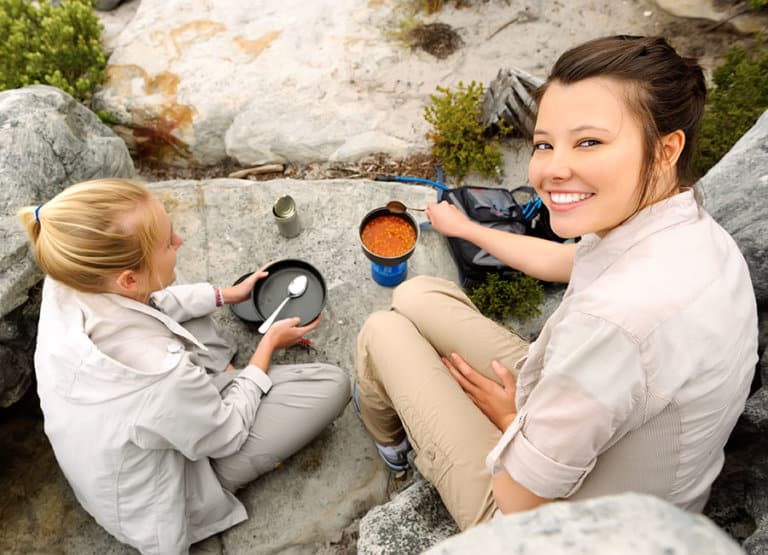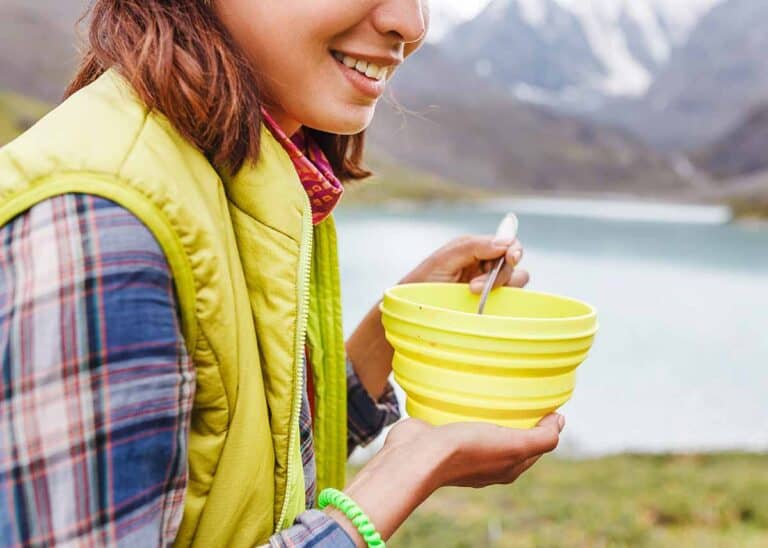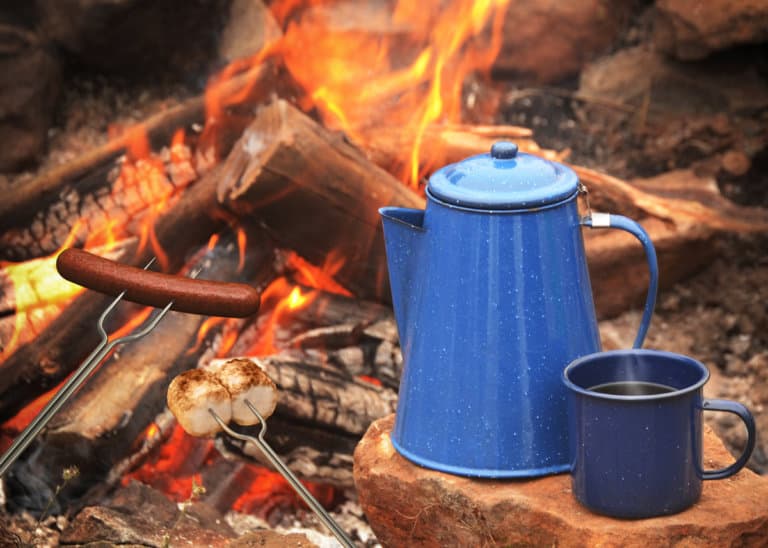Thru Hiking Food List: Appalachian Trail Meals, Snacks and Tips
Planning on thru hiking the Appalachian Trail? Here’s what you need to know about thru hiking food. In this post, you’ll learn about resupply, hiker-friendly towns, and food list and ideas for meals and snacks.
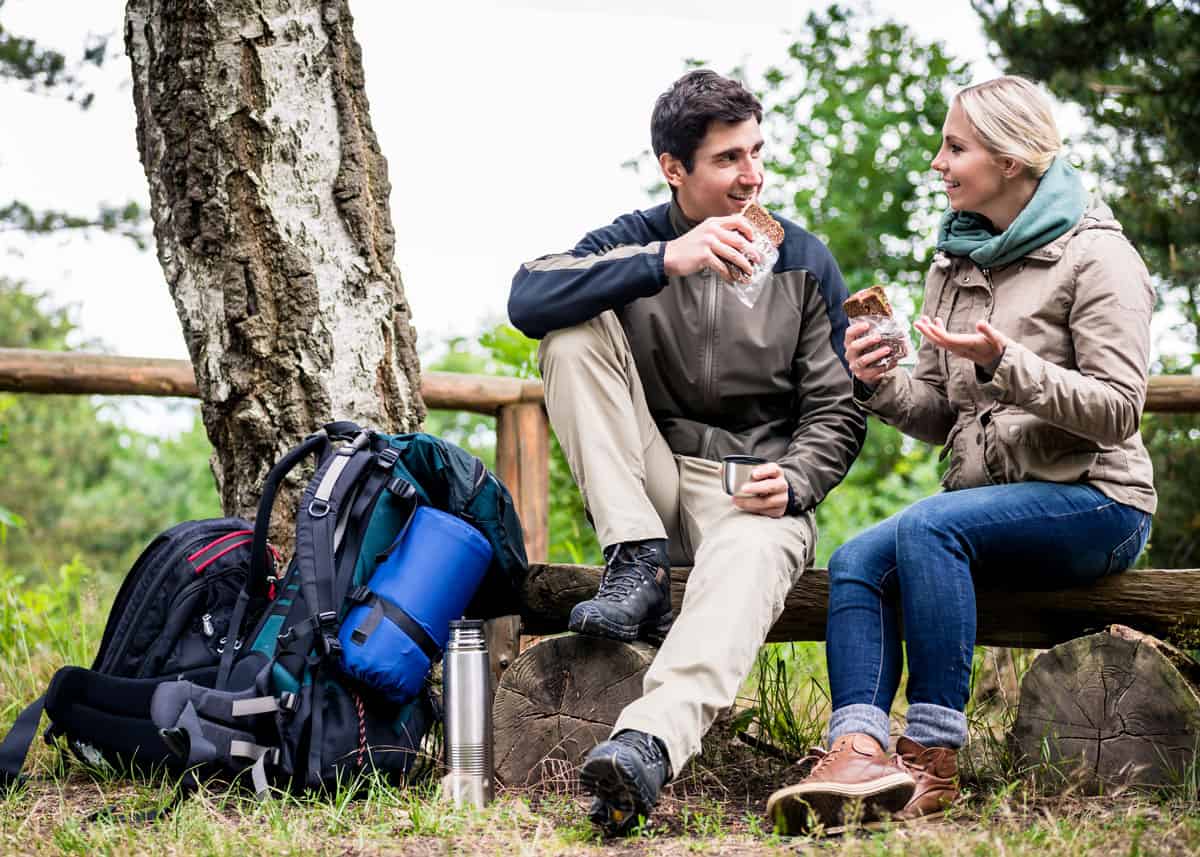
Guide to Appalachian Trail Thru Hiking Food
If you are dreaming about hiking the Appalachian Trail from one end to the other, one of the most important factors for success is food.
Hiking for thousands of miles over a period of several months requires huge loads of energy. For the human body, this means high levels of calories and nutrients.
To help you plan an adequate thru hiking food diet, we have compiled this guide that includes tips, resupply strategies, AT hiker-friendly towns and ideas for meals and snacks.
11 Appalachian Trail Thru Hiking Food Tips
1. Research!
Before you ever lace up your hiking boots, make sure you have researched thru hiking food so that you can accomplish your goal of completing the entire AT.
A quick Internet search will provide you with many informative websites such as the Appalachian Trail Conservancy.
2. Plan a high-calorie diet
Thru hiking burns a lot of energy, and the typical adult can burn anywhere from 5,000–7,000 calories a day while trekking the Appalachian Trail.
Pack enough calories to equal your energy demands while also seeking a good balance of fats, carbohydrates, and protein in your diet. This will keep you feeling satisfied and energized.
3. Make sure you eat a nutritious meal before going to sleep
It may be tempting to just crash and fall right to sleep at the end of an arduous hiking day, but if you want to get up feeling well enough to do it all over again, take the time to eat a healthy meal.
4. Snack regularly and often throughout the day
This keeps your energy levels up and gets you another mile down the trail.
Keeping your snacks handy in your pocket or at the top of your pack prevents having to stop and dig through your food storage.
5. Don’t pack too much food
A heavy pack will drain the energy out of you quickly. Two pounds per day is usually sufficient if your food items are high in calories.
6. Pack a variety of food choices
You may become burned out with some foods while on the trail. This may not seem like a big deal when you’re planning your trip, but the reality of eating the same flavor granola bar every day for many weeks may not be very appetizing.
See below for some suggestions.
7. Plan to carry food items that are quick and easy to prepare
At the end of a long hiking day, you probably won’t feel like toiling over a fancy feast.
More reading: Best Survival Tools for Your Next Adventure
8. Shopping for thru hiking food does not have to be costly or complicated
You can find most lightweight hiking staples at well-known grocery stores and retail stores that sell camping products.
Some hikers may find it more economical in the long run to buy in bulk or to order from online websites.
9. More food is required in the winter
You should consider carrying an extra pound of food per day if you are thru-hiking in the winter since cold weather demands more of your energy levels.
Additionally, you may want to pack extra food in case of a snowstorm.
10. Carry food items that will not spoil quickly and are easy to pack
Many hikers pack staples in plastic sandwich bags if they are not already individually packaged.
11. Bring ultralight camping gear
A few pounds here and there might not sound like a big deal at first. But after hundreds of miles, you’ll start to notice the weight.
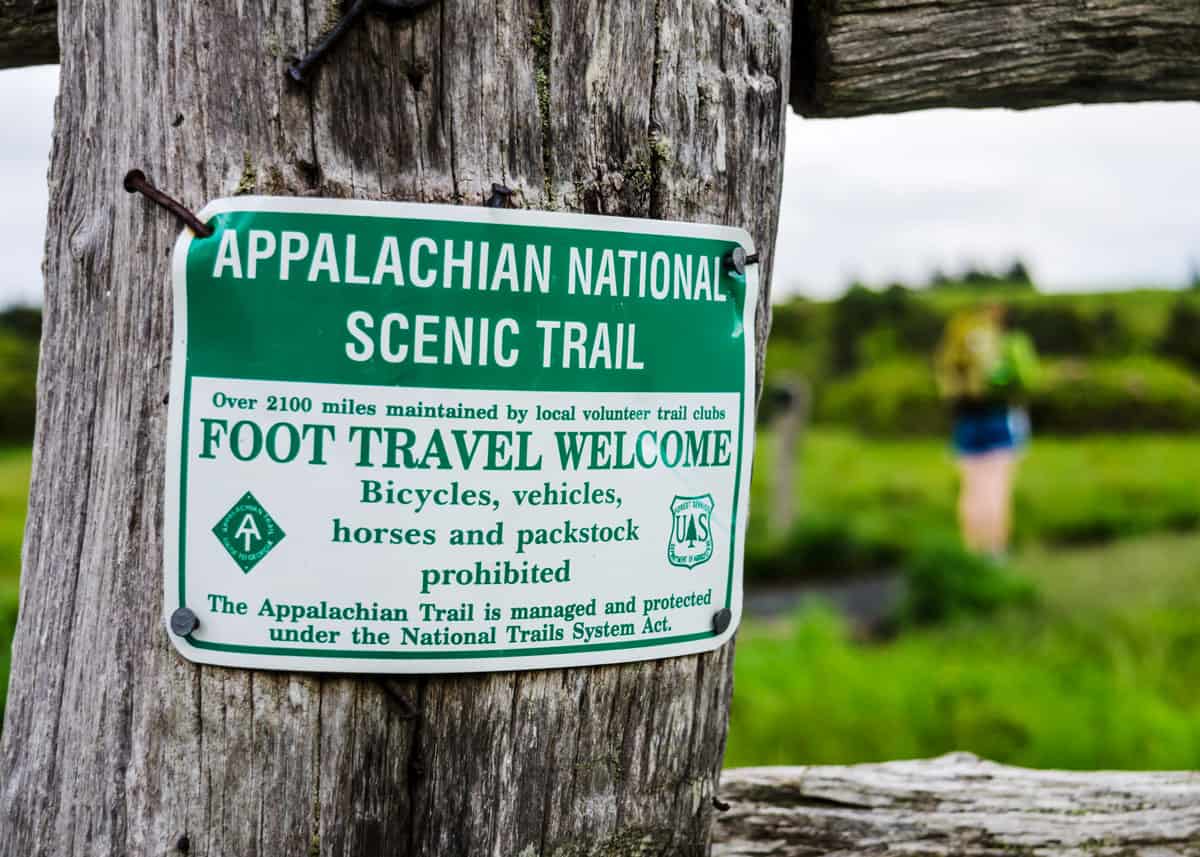
More reading: How to Choose (and Pack) Food for Hiking and Camping
Foods to Pack for the Appalachian Hike
Thru Hike Breakfast
- Dried Fruits: Dried fruits are one of the most popular thru hiking food staples. They are lightweight, don’t spoil easily and pack plenty of carbohydrates and nutrients to sustain your energy levels. A good thing about dried fruits is that there are so many different kinds, and you don’t have to worry about getting bored with eating the same ones all the time. Apples, bananas, apricots, raisins and cranberries are just a few to mention.
- Seeds and Nuts: Seeds and nuts provide you with protein, dense calories, and healthy fats and oils. Like dried fruits, the variety of seeds and nuts is plentiful, ranging from pumpkin, flax seed and sunflower to walnuts, peanuts, cashew and pistachios just to name a few.
- Dry Grains Packets: Individually-wrapped packets of oatmeal and/or grits make a quick and nutritious breakfast. You can even use the packet as a bowl by simply adding hot water to the ingredients inside. You can add brown sugar, dried fruits, honey or protein powder for extra carbohydrates and protein. Using a variety of flavors helps prevent burnout and encourages more food intake.
- Granola: Whether you buy it pre-made or make it from scratch, granola is an excellent thru hiking food because it is often high in both calories and nutrients when combined with nuts, dried fruits, powdered milk and so forth. You can buy packets, prepare individual bags of it before your hike, or simply eat granola bars that come in a wide variety of choices.
- Dehydrated Eggs: What’s breakfast without eggs? They are a good source for protein and energy. You can add water and/or olive oil to your dehydrated eggs to make them more like fresh cooked eggs.
- Bagels: Bagels give you energy to start the day, and they hold up better than loaf bread. You can spread peanut butter on them or other nut butter spreads.
- Powder Meal Replacements: There is a huge variety of powder meal replacements on the market that you can find anywhere from well-known grocery stores to small dollar stores and health food stores. You can also order them online before your hike. High in protein and other nutrients, they are a good way to start off each morning before you start out on the trail.
Thru Hike Lunch
- Dried Meats: Dried, no-cook meats like jerky made from beef, sausage, turkey and bacon provide protein, energy and sodium.
- Ready Made Tuna and Chicken Salad: Individual foil pouches of tuna and chicken salad are good lunch ideas because they are quick and easy to eat and provide protein and energy. You can eat tuna/chicken salad with crackers or spread it on bagels.
- Cheese and Crackers: Cheese and crackers are a hearty and quick lunch idea that you don’t need to stop hiking to eat unless you just want a break. You can either pre-make your own and store them in plastic sandwich bags, or buy them already individually packaged.
- Refried Beans and Cheese Wraps: A lunch idea that is filling and satisfying is making bean and cheese wraps. You can do this by taking dehydrated refried beans, adding a little water and cheese, and then spreading the mixture over a flour tortilla. If you already have your dehydrated refried beans in a plastic bag, you can hang it outside your pack while you’re hiking to warm it up under the sun.
Thru Hike Dinner
- Instant Pasta, Rice, Potatoes and Couscous: Packages of instant noodles, rice, couscous and potatoes are easy and quick dinner ideas for thru hiking food. You can prepare these easily and in a matter of minutes with a portable stove. You can add in dried vegetables and seasoning of your choice.
- Macaroni and Cheese: Whether you use the boxed kind or individually wrapped bowls, macaroni and cheese dinners are often a favorite among thru hikers.
- Dried Lentils: Rich in iron, calories, fiber and protein, you can’t go wrong with lentils. Good examples of dried lentils are black beans, white beans and pinto beans. You can soak these beans in water while hiking, and then when it’s time for dinner, you can add some olive oil for texture and healthy calories. You can eat your lentils by themselves or with chips, rice, pasta or tortillas.
- Freeze-dried Meals: Before you begin your hike, check out all the freeze-dried meals available on the market. You can find dinner ideas such as beef stew, cheeseburgers with all the fixings, chicken and dumplings and Chinese or Mexican-style meals just to name a few. These hearty meals can taste pretty good after a long day of hiking.
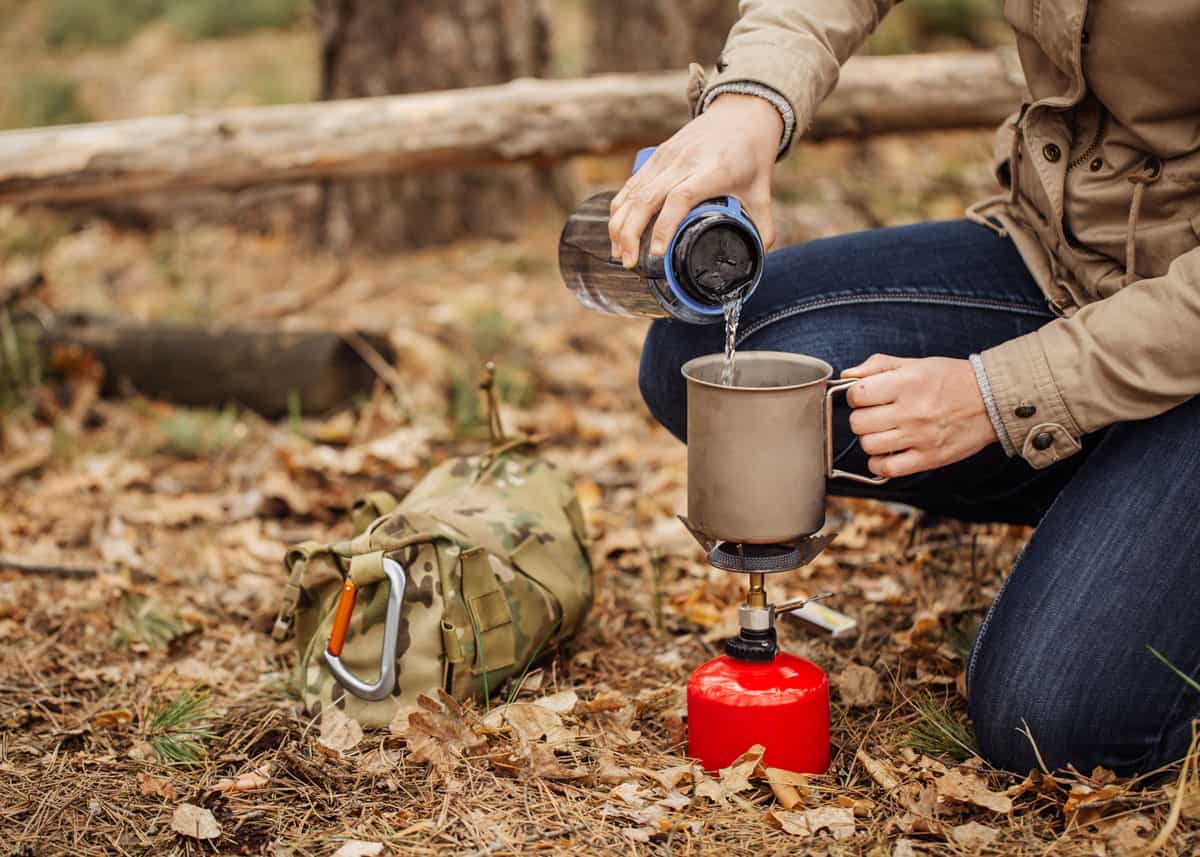
Thru Hike Snacks
While snacks and junk food are frowned upon for normal, everyday life, they are an important part of thru hiking food. Hikers need to eat as much as they can to maintain energy and prevent too much weight loss.
Snacks should be eaten often throughout the day. Good snack ideas include:
- Trail mix
- Energy bars
- Candy bars
- Peanut butter and crackers
Thru Hike Drinks
- Water: Staying hydrated while thru hiking is crucial. It is a good idea to pack a sturdy, reusable water bottle and water treatments such as iodine or chlorine dioxide drops/tablets to prevent drinking contaminated water on the trail.
- Powder Mixes: Many powder mixes offer a wide variety of flavors as well as electrolytes and vitamins. The individual packets make it easy to just mix with a bottle of water.
- Instant Coffee and Tea: While it is not a good idea to drink coffee and tea throughout your hiking day (caffeine can dehydrate you), a cup or two in the morning can get you up and going. You can choose single packets of instant coffee and single tea bags to make preparation easy. Here’s the guide to making camp coffee.
Supplemental Items
- Spices: Onion flakes, garlic powder, chili seasoning, oregano and cinnamon are just a few spices and seasonings that you may want to include in your pack to spice up your thru hiking food.
- Olive Oil: Dense in calories and fat, olive oil is a good staple to pack on the Appalachian Trail because not only does it enhance your food, but it also helps prevent too much weight loss.
- Multivitamins: While you should be eating foods rich in vitamins and minerals, it is proactive to add a multivitamin supplement to your daily hiking routine to boost your immune system and ensure that your body is getting the energy, vitamins and minerals it needs to keep up with the rigorous demands of thru hiking on the Appalachian Trail.
- Salt Tablets: Warm temperatures and long hikes can cause considerable sweating, and hikers may not realize just how much fluid they are losing. Loss of sodium and electrolytes can cause muscle cramps. In addition to salty foods, water and powder mixes, you may want to consider packing salt tablets.
Don’t let biting insects ruin your hiking trip! Here is the hiker’s guide to essential oil bug repellent.
Appalachian Trail Food Resupply Strategy
It is a wise idea for thru-hikers to have a resupply strategy. Some hikers choose to pack up several different boxes of food supplies and mail each of them to different towns along the AT.
When they arrive at these towns, they usually pick up their boxes at post offices, hostels, outfitters or other businesses.
Other hikers prefer to buy a few things along the way and ship them a few towns up ahead on the trail. Then, there are others who prefer to simply eat at restaurants when they come to towns and buy what they need as they go.
You can research these different methods and/or talk with experienced hikers who are familiar with the Appalachian Trail to decide for yourself which resupply strategy is best for you.
There are some towns on the Appalachian Trail that may be limited to supply quantities and varieties, so you may want to consider shipping resupply boxes to these places. While it is not a complete list, below are a few such towns and addresses to where you can mail resupply boxes.
- Bryson, NC (Mail to: Nantahala Outdoor Center Outfitters, 13077 Hwy 19W, Bryson City, NC 28713)
- Fontana Village, NC (Mail to: Fontana Lodge, ATTN: Front Desk, 300 Woods Dr., Fontana Damn, NC 28733)
- Bland, VA (Mail to: Post Office, Bland, VA 24315 or Big Walker Motel (for guests only), 70 Skyview Lane, Bland, VA 24315)
- Harper’s Ferry, WV (Mail to: ATC HQ, PO Box 807, Harpers Ferry, WV 25425)
- Caratunk, ME (Mail to: Post Office, Caratunk, ME 04925)
- Monson, ME (Mail to: PO Box 215, Monson, ME 04464)
Prefer fresh food? Here’s how to keep food cold when camping.
5 Hiker-friendly Towns on the Appalachian Trail
Stopping at towns along the Appalachian Trail gives hikers the chance to not only resupply but to enjoy a hot meal, shower, socialize, and spend the night in a comfortable bed.
The following list includes a few of the AT towns that are known to be hiker-friendly and offer these amenities.
- Hot Springs, North Carolina: The trail winds through this quaint town and features hostels, shops and restaurants and AT symbols on the sidewalks.
- Damascus, Virginia: This small, hospitable town has plenty of good places to eat, hostels and full-service hiking gear shops.
- Waynesboro, Virginia: As the last stop before Shenandoah, this town offers tasty restaurant choices, hostels, a large grocery store for resupplying and a YMCA where you can shower and camp.
- Monson, Maine: The last stop before the 100-Mile Wilderness, Monson has good food, highly-ranked hostels and a nice lake.
- Hanover, New Hampshire: Setting of Dartmouth College, this university town provides a wide variety of cafes and restaurants, hostels and public transportation that is free of charge for hikers.
5 Things I Wish I’d Known Before I Hiked the Appalachian Trail
While more people are attempting the Appalachian Trail each year, it is estimated that only about 20 to 25 percent ever complete the thru-hike.
One of the many reasons is that some people underestimate their thru hiking food needs. We hope that this guide will better prepare you so that you can accomplish your dream and be among those who finish the Appalachian Trail.
Your Turn
What food are you planning on taking? Please share your tips and questions below!

